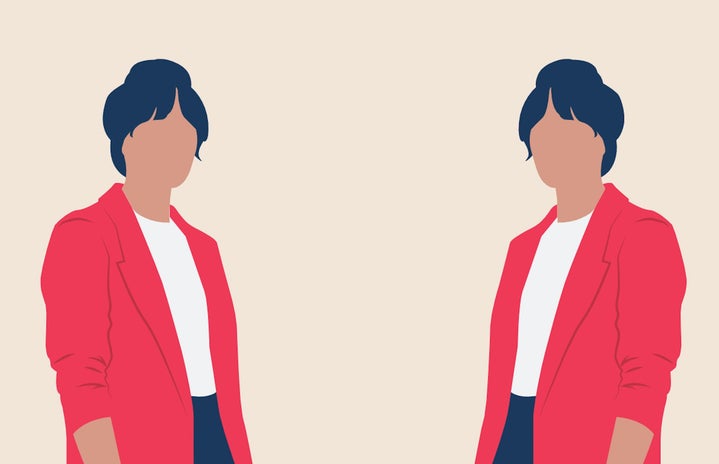I’m all about closet staples — a great pair of jeans, reliable white sneakers, and some graphic tees are mine. But one you’ve probably seen around (and should probably own by now) is a good blazer. I like to style mine in a classic, more street style way, but lately, I’ve been seeing people go bare underneath a blazer, or even rock it as a dress.
The menswear-inspired piece has been reclaimed by women in the past few decades, and I’m here for it. But, much like Carrie Bradshaw, I couldn’t help but wonder —where did this trend come from and how did people originally wear the blazer?
The first blazers were hastily designed for the English Royal Navy, after the captain of the frigate HMS Blazer heard that Queen Victoria was visiting the ship. Luckily, the double-breasted jackets impressed the Queen, and they were made a part of the official uniform. From there, the aptly-named blazer took off.
Not long after the blazers were adopted by the Royal Navy, rowers at Oxford and Cambridge began to sport blazers to keep them warm during chilly warmups or races. At the time, they were looser and were treated more like windbreakers. The blazers were decorated with different colors and patches that helped spectators identify each team.
This trend only made it to land once rowers started wearing their blazers around college campuses, in a way that another athlete might wear a varsity jacket. The trend crossed into America as Ivy League universities like Yale and Harvard adopted the blazer. It’s sporting connections began to fall away, especially once the blazer became more structured and became suitable for work. The trend really took off once the notorious preppy brand Brooks Brothers began selling blazers in the US.
So technically, the blazer was designed to impress Queen Victoria. Had she not approved of the style, we might not be wearing blazers today. What made women approve this trend for themselves? Designer Coco Chanel shocked the public in the ’20s by adopting androgynous style, filling her collections with suits, tweed blazers and trousers. She paved the way for future menswear-inspired fits, which became increasingly popular in the ‘30s once actresses like Audrey Hepburn sported blazers and bow ties in their famous films.
When WW2 came around, women began to wear menswear to work as women’s attire was no longer functional for the physical work they were doing. The problem was that even in the rise of menswear, women were still expected to wear skirts or dresses, so women began tailoring their husband’s clothing to fit them. It wasn’t until 1939 that the first trousers for women were made (with no “mannish” accessories, advertised a 1940s Vogue). Women were free to wear what they wanted with the exception that they still looked pretty and feminine for their husbands.
In the ‘50s, women were expected to go back to more dainty styles, especially as they transferred from the workforce back into housewives. A group of women in London called the Teddy Girls, however, rejected traditional norms by wearing rolled-up jeans, flats and blazers.
It really wasn’t until the ‘60s and ‘70s that women wearing menswear wasn’t considered a rebellious political statement. Women were receiving more rights in the workforce, and celebrities started to break away from feminine clothing. Yves Saint Laurent popularized the blazer even more when he designed the “Smoking” Tuxedo Jacket, hailed as the alternative to the Little Black Dress. As he said himself, “For women, the tuxedo is an indispensable outfit, which they feel comfortable with, so they can be who they are. This is style, not fashion. Fads come and go, style is forever.”
The ‘80s gave way for even more women in the workplace, and designers made note. The “power suit,” complete with bold colors and shoulder pads, created a new sense of authority for women. UK Prime Minister Margaret Thatcher always wore a suit, stating that “she was in a man’s world, and she had to look the part.”
Since then, women have completely owned the menswear trend, adding vests, trench coats, boyfriend jeans and suit sets to the mix. But now instead of focusing exclusively on menswear tailored to fit women’s bodies, we’ve accepted oversized and loose garments, too. Bright colors and patterns have been added, as well as an array of sizes and fits.
Like YSL said, “style is forever.” Which kind of blazer will you be sporting on the street?


